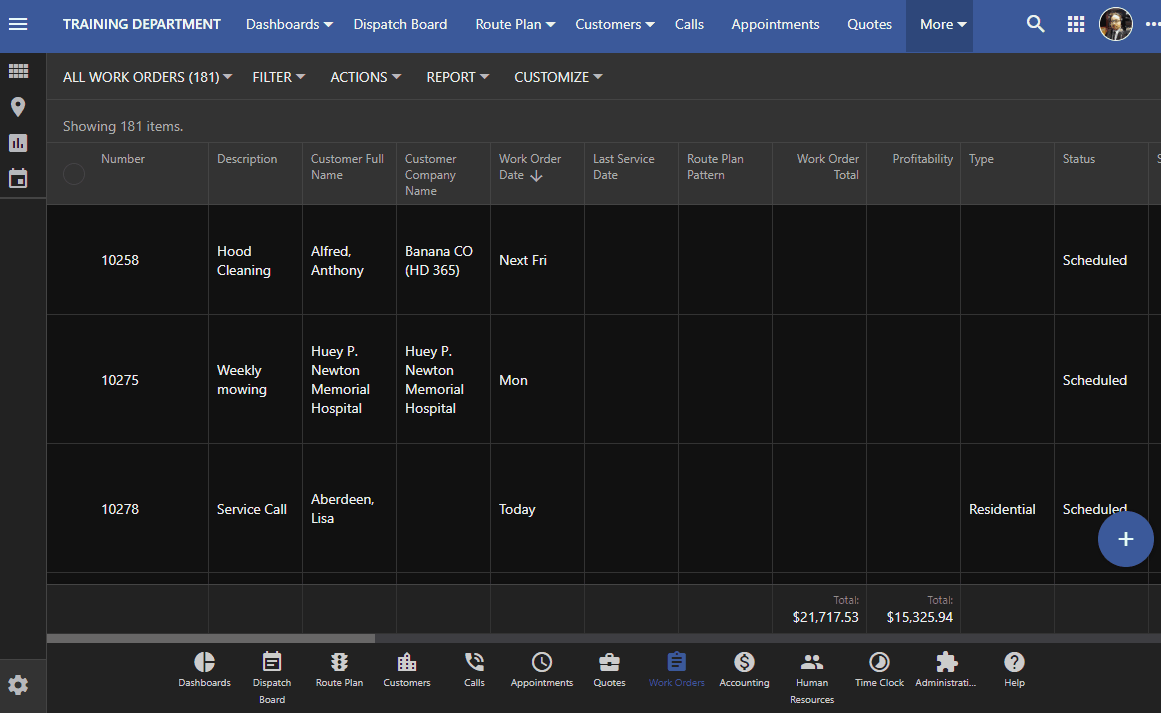Have a question? Enter a search term. Or give us a call at 1-888-518-0818
In Smart Service Cloud, a recurring service with a predictable pattern would be considered a Preventive Maintenance (PM) service. Examples of this kind of service would be quarterly filter changes, annual alarm inspections, or irrigation startups. If your business is in the document destruction or lawn care industry, we suggest reviewing our Route Logistics feature instead.

You could start this work order from scratch (or a quote if that’s better for the situation) by clicking and dragging over a time slot on the dispatch board. If you’ve set up Quick Entries previously, you could start with one of those instead.
Whether you chose to start with a quote or work order, your part of the process is largely the same from the office side. When you start your quote or work order, you should select a customer and enter a job description on the appointment screen. We’ve included an example of what you could add to each box in the picture below.

Once you’ve added this information to your appointment, click save at the bottom. This will take you back to the calendar where you can open the appointment by clicking on it.
Once the appointment is on the calendar, you can click on it and open the appointment level where you can add the recurrence pattern.
When you’re dealing with recurring work orders for services like these, there are a few additional items your employees should consider to help keep you organized.
The first item to consider is encouraging your field techs to use the “Time Stamp” feature (pictured below) for these types of services. While editing a work order, they’ll have access to this option which notes the date, time, and users creating the note.
This is important with recurring jobs if you need to know if the note you’re looking at is relevant. Since this same notes section will grow as we complete more of this service, it’s a good idea to add some time stamps when you can.

The items you add to this service are also important to keep an eye on. If you add line items to this work order, those items will show up on every instance of this service in the future. If you only used that item on this particular visit, make sure to delete that item from the work order after you’ve invoiced for the visit where it applied.
Our last recommendation is for ending/changing recurrence patterns. The recommended process for ending or changing a recurring service is to go back to the appointment level and set the recurrence pattern for non-recurring.

For this guide, we’re assuming that your field tech marks a work order as complete and doesn’t collect payment on site. If your field tech does collect payments, you can skip this section and instead check out our article on collecting payments and sending info to QuickBooks Online.
The first step in the Work Orders center is to filter down all of your work orders to just the completed work orders from recent dates. You can click on the column headers to make these changes as shown below. Once these completed work orders are changed over to invoices, their status will be “Invoiced” so filtering by completed will show you the completed work you don’t have invoices for yet.

Click on each work order individually and review the information the field tech has added. If the work is done you can turn that work order into an invoice by clicking the “Invoice” button at the bottom.